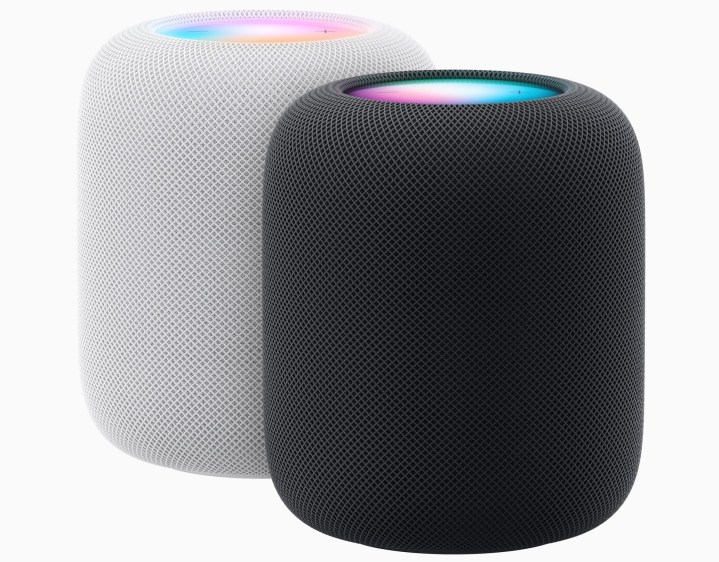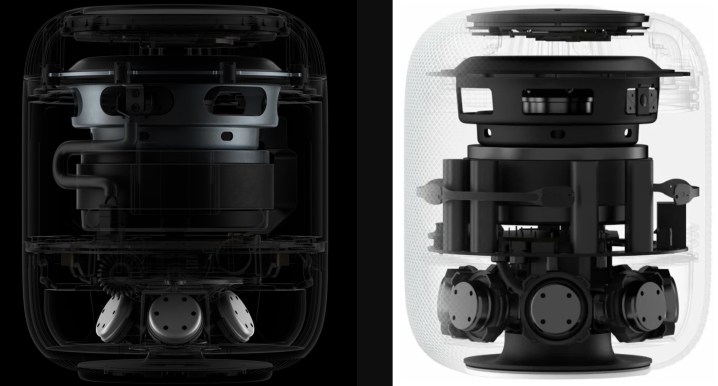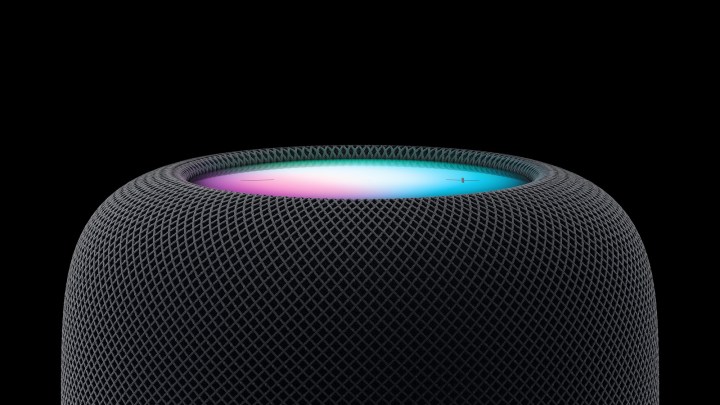It has been quite a few years since Apple first launched the (now-defunct) HomePod, but the old smart speaker has been given a revival. The second generation HomePod retails for $299, and it offers some serious improvements over the original. Not only does it bring enhanced audio quality, but there are plenty of other upgrades that make it much better than its older sibling. Here’s a closer look at all the differences (and similarities) between the original HomePod and HomePod 2023.
Design

When compared side by side, you won’t notice many differences between the two HomePods. The new HomePod is about 200 grams lighter than the original model and is a couple of millimeters shorter, but overall the two are very similar. The touchpad on top of the HomePod 2023 is also a bit larger and now extends almost all the way to the edge of the device. Beyond those minor differences, they both sport an oblong design and come in multiple colors.
Speakers and sound

The original HomePod sounded great — and its successor sounds even better. With a 4-inch high-excursion woofer, five horn-loaded tweeters, and support for Spatial Audio with Dolby Atmos, Apple is positioning this to be one of the best-sounding smart speakers on the market. It’s also running the S7 chip, which should help it utilize room-sensing technology to optimize its performance.
Siri and smart features

Matter is the tech to watch in 2023, and Apple made sure the new HomePod supports the interoperability standard. That means you’ll be able to connect your HomePod with anything else that supports Matter — a list that continues to grow larger every week.
Like the outgoing HomePod, this one also features Siri support. You can give it a wide variety of commands to carry out, and since the smart speaker is built with four powerful microphones, it’ll hear your commands loud and clear. It can also hear smoke or carbon monoxide alarms and send notifications to your smartphone. And just like the cheaper HomePod mini, the HomePod comes with a temperature and humidity sensor.
Rounding out its list of notable features is support for Ultra Wideband, which will allow the HomePod 2023 to detect and quickly sync with the rest of your smart home.
Apple TV compatibility

The new HomePod is compatible with Apple TV, and it can share content with other products in the Apple library (such as iPhone or iPad). So, if you have any of those devices lying around your home, picking up the HomePod could be a great choice as it’ll easily integrate with your existing setup.
Availability
The original HomePod is no longer for sale. The HomePod 2023 goes on sale February 3 and retails for $299.



